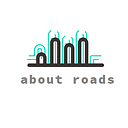Catch me if you can
Bluetooth is a wireless technology standard used for exchanging data between fixed and mobile devices over short distances using UHF radio waves in the industrial which is also known for every sapiens in the World.
Later developments were related to communication speed & quality. But devices other than phones also had to communicate with Bluetooth in order to proceed. For example, wireless keyboards sets, sound systems especially headphones and smart watches.
So why shouldn’t vehicles also communicate?
Yes, as you know, people’s phones, headsets, smart watches and vehicles are equipped with Bluetooth devices and many of these devices are constantly walking around visibly.
So what are we doing with Bluetooth?
By placing our devices containing Bluetooth modules at designated points in the city, we detect the Bluetooth devices circulating around and thus we can calculate the average travel times on that route by extracting travel maps with tracking same device IDs through the bluetooth tracker modules’ installed city locations. Thus, we can convey the average travel time information to the drivers via VMS modules.
We could have taken a better picture :/ (Kent Meydanı 14 dk: 14 minutes to City Center)
Bluetooth Technology evolved, what about us?
In our previous versions, we were using Bluetooth version 2.1, ie the old version, and this was the case until 3 months ago. We realized that our module we designed could not detect Bluetooth devices with the new version as a result of scanning. Thinking that this issue is serious, we started researches and we realized that the old version device in our system cannot communicate with the new version Bluetooth devices.
We then bought and tested BLE (Bluetooth Low Energy) devices and finally decided to develop Bluetooth v4.0 on a device.
The first results came as expected:
Above is the graph of the number of mac addresses — time they found in the office with old module (BT v2.1) and new module (BT v4.0), which are in continuous scanning. Finding an average of 7 times more addresses here, the new module passed the tests.
The results of the screening test of 45 minutes in the office are given below:
The real-time scanning test on the highway is as follows:
As a result, while Bluetooth v2.1 module captured 7500 different vehicles, BT v4.0 module passed this test with 22500 different vehicles.
Finally, in order to calculate the travel time, which is the main usage area of these modules, two corridors were established and the old and new module comparison tests were made.
The new module has shown an exponentially increasing performance when the traffic density increases and also passed this test.
As a result;
<><><> How it started <><><><><>How it’s going<><><>
Ensari is interested in hardware technology and hopefully traffic industry. He enjoys mobility concepts and espacially motor sports like Formula-1. Thanks to this week’s Formula 1 Istanbul Park Race, I will test the new sensors at maximum speed and get back to you. Keep in touch.
For more mobility concepts check out issd.com.tr

